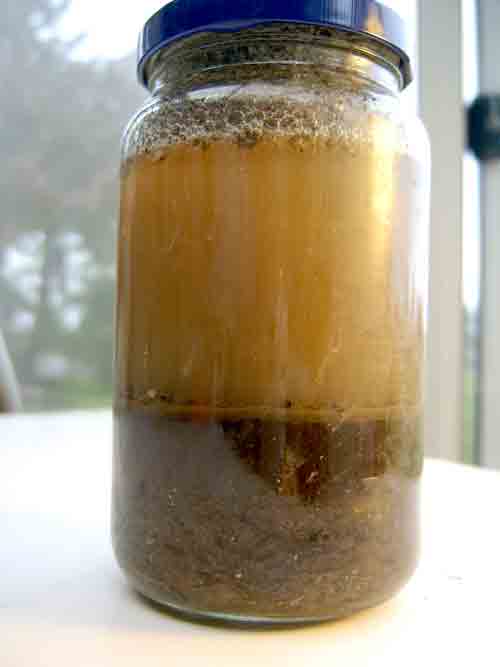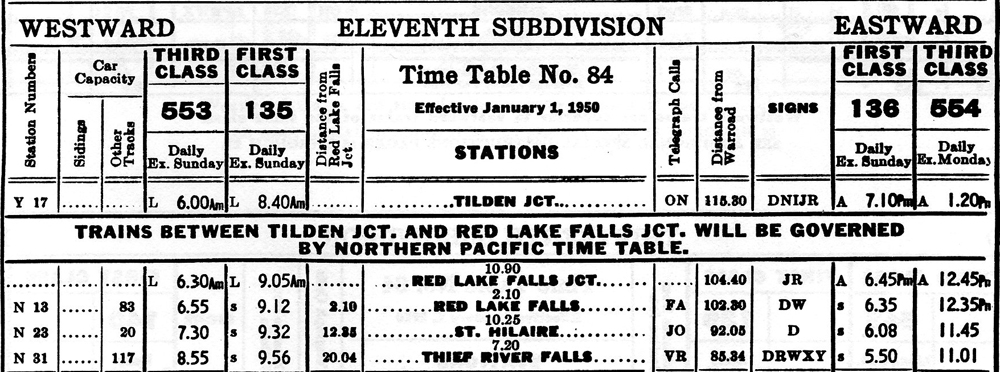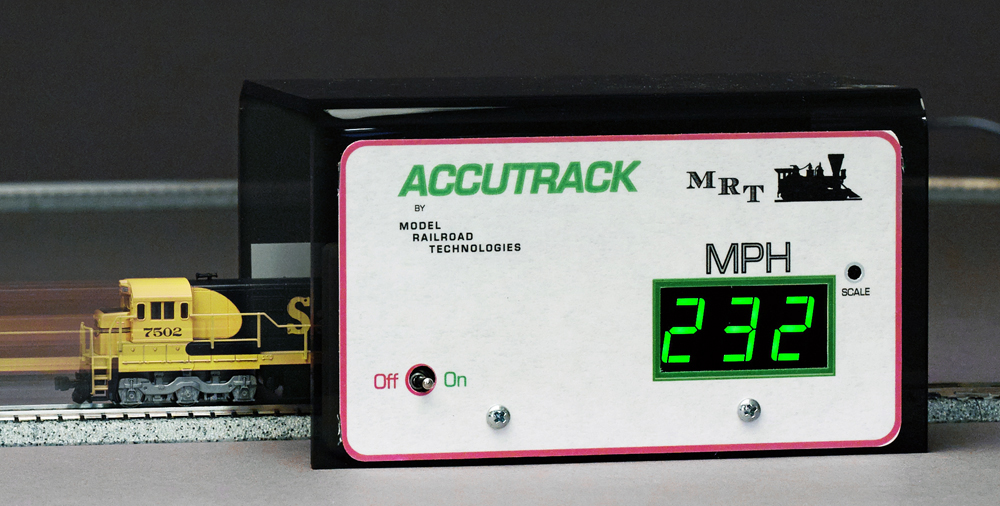Soil is the foundation of the garden in more ways than one. As goes the soil, so goes the garden. Soil is much more than just dirt. It is a mix of fine rock particles, organic matter, water, air, and microorganisms. How plants perform in your garden and the things you do to encourage them (e.g., with amendments, fertilizers, irrigation) depend on soil characteristics.
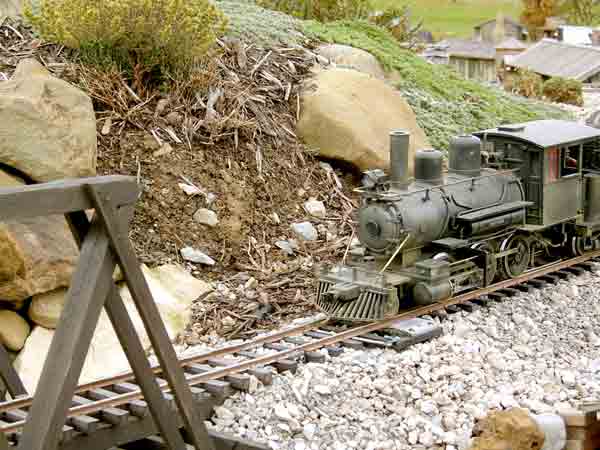
Even for those not blessed with (or who couldn’t care less about having) a green thumb, some of the following information might be helpful in caring for an outdoor railroad, which is usually associated with soil in some way.
Soil structure
If water puddles in your yard after a heavy rain, the poor drainage is likely related to the soil structure underneath. If a plant thrives in one part of your garden and not another, it is likely due to the soil structure in which it grows. How water travels through the soil depends mostly on the particle make up of soil-its composition and structure. Water will percolate better through soils with more sand or gravel than through soils with high clay content. You can estimate the percentage of the mineral components of your soil (sand, silt, and clay) with the jar test (see method below).
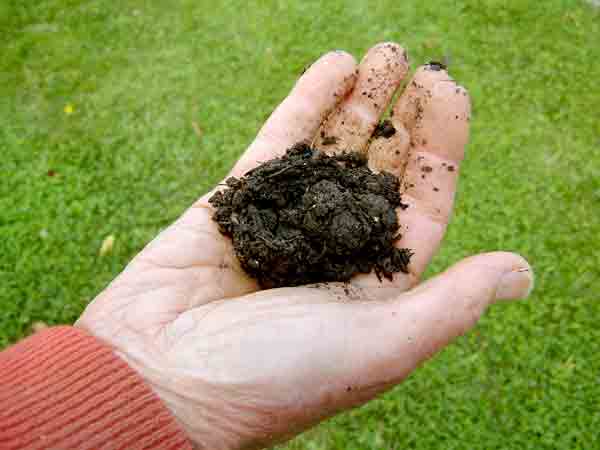
To determine how well any spot in your yard or garden drains, use the perc test. Dig a hole one foot deep and fill it with water. Test each area where soil differs. After one hour, measure the depth of water in the hole. Soil in which the water lowers one inch or more per hour is fast draining. Less than one-quarter inch per hour is slow draining. Rates in between these two indicate soil-drainage characteristics that are desirable for most plants.
The stability of soil also depends on its structure. This is important in civil-engineering projects (including our miniature-railroad building). Railroad cuttings or embankments through soils with high clay content will hold their shape quite well, but will slump more easily with increasing amounts of sand. Terracing, rock barriers, or retaining walls become necessary to support soil with a more fragile structure. You can easily test for these soil characteristics with the squeeze test. After a good, drenching rain, take a small handful of loose soil and squeeze it into a ball. (If the soil is dry, add a few drops of water to just moisten it.) Open your hand. If the ball crumbles immediately, it has a high sand component; if it crumbles with a light touch, it has a good balance of sand, silt, and clay; if it holds its shape, it has a substantial percentage of clay. If you can roll it into a sausage shape, it has a high clay content.
With plants, a friable soil structure is beneficial. Good garden soil has spaces between particles to hold water and air. Too-large spaces (as in sandy and gravelly soils) will not hold water well, as gravity pulls it through. Whereas, in clay soils, the spaces are so small that water becomes bound to the microscopic clay particles and unavailable to plants; and there is no room for air, which plant roots need for oxygen uptake. That is the basic reason why waterlogged clay soils are hard on plants.
Clay soils have a great affinity for water. They will pull it in like a sponge (if there is no hard, compacted surface crust) and hold it for longer periods of time. They will pull water out of adjoining, looser soils, making plants grown there at greater risk for drought damage. So, if you place a plant in loose, amended soil in a hole dug in heavy clay soil, you will have to watch the plant more closely for water need in dry periods.
Other soil conditions
The level of soil acidity governs the availability of nutrients to plants. If the soil is too acid or alkaline, some nutrients won’t dissolve easily, and so are unavailable for uptake. The relative acidity of soils is measured in pH units (the lower the number, the more acid). Most plants grow best in soils with a pH of 6.0 to 7.5. You can measure your soil’s pH with a simple home kit obtained at most garden stores.
Improving your soil
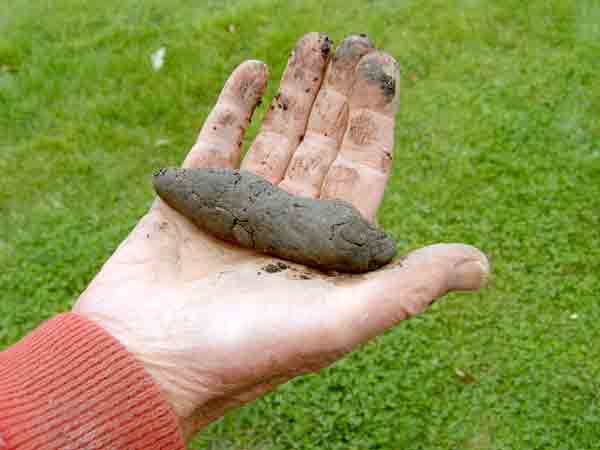
Soil conditions that are unfavorable for gardening can be changed, up to a point. The single, most effective way to improve most deficiencies is by adding organic matter. Organic (plant based) amendments will greatly improve the structure of soils with excessive clay and excessive sand contents. They will tend to bring overly acid or alkaline soils back towards neutral. They will make many nutrients more available to plant roots. And they will foster a healthy colony of microorganisms that are beneficial to plants. Not bad for the stuff that we commonly bag up and put out on the curb for the trash or recycle trucks to haul away. Put those leaves, grass clippings, garden waste, and kitchen scraps (no meat, dairy, or bones) in an unobtrusive compost bin for a few months and you will have what every plant dreams about. If you can’t make compost yourself, get it from your municipal yard-compost facility or a nursery/garden center that sells it. Compost (or aged manure) can be dug or tilled in when planting the garden. A garden that is well established will need only a one-inch layer of fine compost or other decaying organic matter applied over the surface, once a year.
Benefits of mulch
Organic mulches work well also, but require a longer time than compost to break down into humus, the end product of the decay of plant material. Finely ground leaves make a good mulch that breaks down fairly rapidly. Tree bark and hardwood mulches break down more slowly but are more decorative. Mulch also helps preserve soil fertility by preventing the leaching away of nutrients created by the decaying process. Especially in the south, where higher soil temperatures speed up the loss of organic matter, mulch serves the additional purpose of keeping the soil cooler. Raindrops on bare soil can destroy the loose soil structure you have worked hard to obtain, and erosion by wind and water occurs more easily on bare soil. A cardinal rule for maintaining good soil structure with healthy organic components is to make sure every square inch of soil is covered with plants, groundcover, or mulch.
Nutrients in soil
Adding nutrients (fertilizers) to the soil should only be done if a deficiency is detected. Signs of poor growth or yellowing of leaves may be due to a lack of specific nutrients. It can also be a sign of overwatering (waterlogged roots), or too much fertilizer (root burn). Adding a balanced fertilizer to a new garden bed, well tilled in, can be helpful to get new plants off to a good start. Established plants, especially woody plants, seldom need additional fertilizer. Maintaining a good level of organic matter in the soil is all that is required for mature, healthy, growing plants.
Exceptions to that principle might include roses and heavy-blooming annuals. Scratching in a slow-release fertilizer once or twice a season will keep them perking along at their best. Rhododendrons and azaleas might benefit from an early spring feeding of an acid-tending nutrient, such as cotton-seed meal. (I prefer organic-based fertilizers, which release nutrients more gradually and won’t burn tender roots.)
Healthy soil, healthy garden
One way to help preserve soil structure and health is to keep your big feet off of it. Soil compaction can destroy all the benefits of the amendments you’ve added. Use paths or stepping stones to access your garden for maintenance. A good sign of healthy, organic-rich soil is the presence of earthworms. It’s interesting to note that chemical fertilizers will often repel earthworms, who are, in effect, telling us that we are interfering with nature’s balance of soil components and chemical activity. Healthy soil is an amazingly alive, metabolizing entity. Giving it the simple materials it needs will keep it, and the plants that depend on it, very happy.
The jar test
